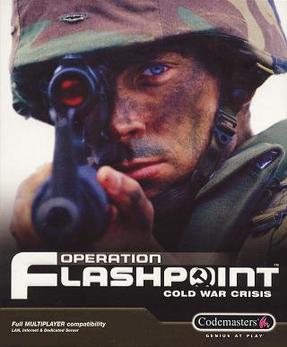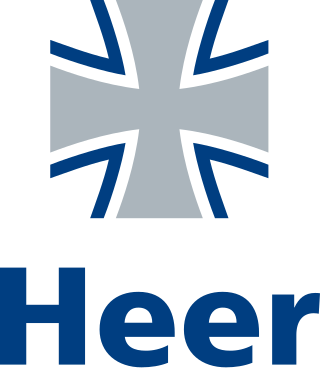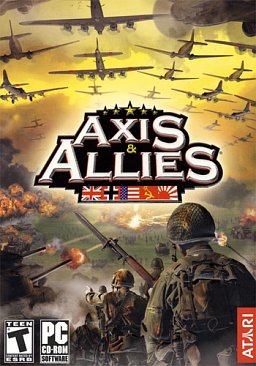Initial release
The game is commonly recognized as the first MMOFPS. [4] Following the purchase of Interactive Creations of Grapevine's WarBirds by IEntertainment Network in 1999, several of the developers departed the company and formed new gaming companies. Some went to form Hitech Creations, while others went with John "Killer" MacQueen, Jonathon "Hoof" Hoof, Chris "Mo" Sherland [5] to leverage their experience on WarBirds and Raider Wars to develop [6] an online gaming network (G2 Network) [7] with a massively-multiplayer first-person WWII simulation [8] for both PC and Mac [9] as the showpiece. [10] After a lengthy closed beta stage, WWII Online went live on June 6, 2001 under the campaign title Blitzkrieg. The release was timed to coincide with the anniversary of the D-Day.
Like most online games, WWII Online is a continual work in progress, and so has a history of updates that are frequently released to add new features, fix problems and improve existing features. Updates, or patches to the game code, were released every 6 weeks, on average, but recently have moved to a less frequent but larger content format of 3 or 4 times a year. These patches generally include a wide range of features and problem fixes. Everything from new weapons and vehicles to audits of the performances of existing weapons and vehicles are part of the patching process as well as terrain, structure, game play and performance improvements.
The initial launch had a number of technical difficulties. The game required that players download a 70 MB update before they could play online. At the time, the majority of users had 56k modems, requiring around three hours to update the game. As the developers worked feverishly behind the scenes to complete other promised features and fix the software bugs on the gold CD, even more updates became necessary. Three days prior to release, the colocation network facility had a bad fiber optic cable. This failure reduced the player capacity of the server cluster, from 10,000 players down to only 1200 players. As a temporary workaround, Playnet set up multiple copies of the game-world on different servers, distributing the network load, but at some cost in game play. This solution lasted for several months while the developers resolved the server-side issues, after which all servers were merged into a single game-world. Some features advertised on the game box were partially implemented, or missing, such as rank and high-command strategic features.
The combination of the above problems resulted in game returns, complaints from customers, and a drop-off in sales as word spread of the game's state. Subscription fees for the first several months were waived, until the major problems with the game were resolved. This helped to retain many of the players, especially the long-term fans of the project, but it was not long before Playnet had financial problems. They filed for Chapter 11 bankruptcy protection in late 2001, and cut costs, resulting in a number of lay-offs within the company. Statements from both the developer (CRS), and publisher (Strategy First), indicated that CRS wanted a longer open beta, but the game was launched anyway, due to financial reasons. [11]
Retired developers
Cornered Rat Software has a long tradition of honoring those who participated on the development team. This list shows the "call signs" of all RATS (or game developers) recognized by the team for their contributions.
The list includes: Ahwulf, Airborne, Animal, Arradin, Bable, Badger, Blkhwk8, Bloo, Bmbm, Caligula, Caveman, Chkicker, Codec, Company0, Crawdad, Dekard, Doc, Dragon, Drloon, Edthehead, Elmo, Fogaban, Fohdron, Fredrik1, Frytiger, Gnache, Gophur, Granik, Greatone, Greni, Gryf, Gvonpaul, Hallpass, Hawkmoon, Hicksey, Heavy265, Hoof, Hoss, Jaeger, Jammyman, Joker007, Jokerzwild, Kango, Kfs1, Killer, Kms, Krieger, Kyotee, LadyJ, Latham, Lindir, Maco, Martini, Maypol, Meat, Mediiic, Minnie, Mo, Monty, Motormouth, Mumbles, Newzguy, Rafter, Ramp, Rickb, Rogue, Salad, Scking, Sgtfury, Shef, Sherman, Shilling, Showkillr, Sideout, Snail, Snicker, Soloje, Squirm, Staffel, Stick, Sudz, Tadpole, Tater, Tgunr, TheChosn, Thunder, Tongue, Toto, TopD, Tragic, Trips, Troper, Vandal, Victarus, Vixen, Vozz, Waver25, Wickett, Wildhund, Xl2rippr, Zach and the others that may have been unintentionally missed.

















